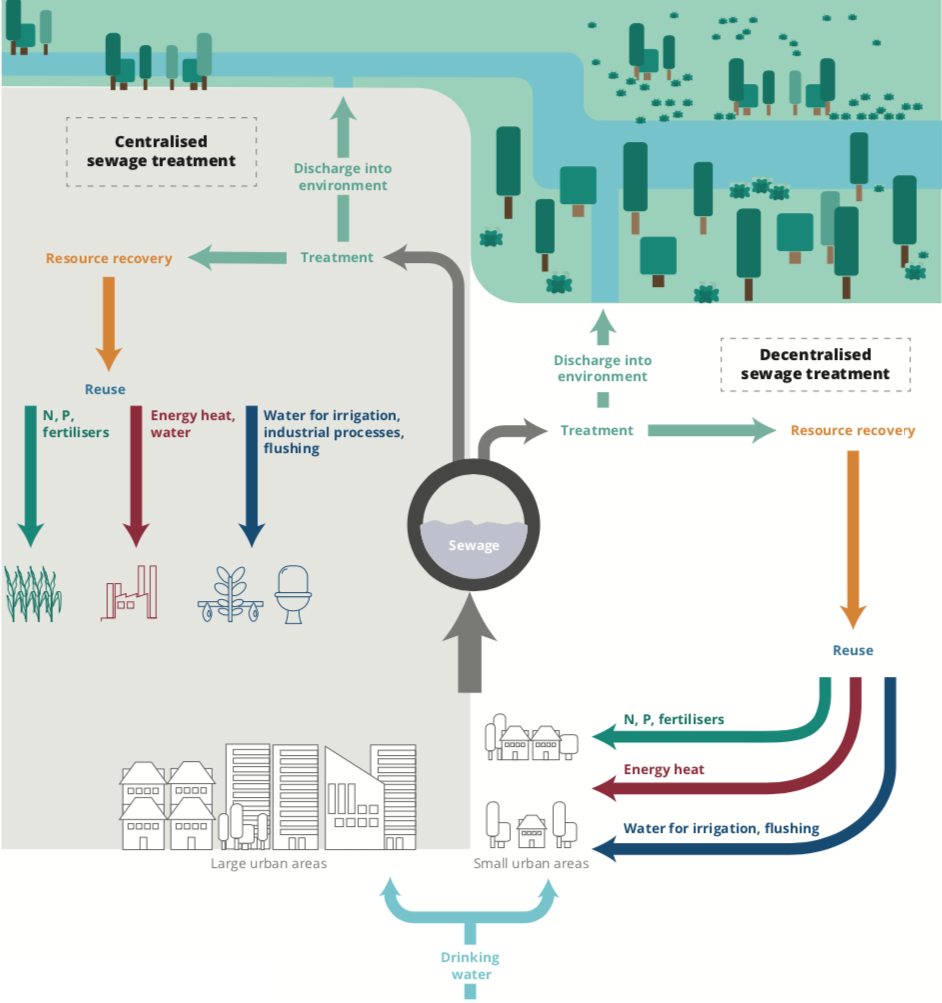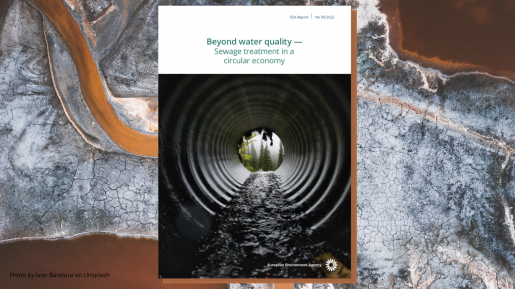Reimagining water treatment: how circularity approaches can support achieving zero pollution
Traditionally, water treatment plants have focused on cleaning waste water and returning it to the environment following a linear approach, i.e. simply dispose of used water. With innovation in technology, these facilities have the potential to act as resource hubs, providing reclaimed water, energy, nutrients, and organic materials for reuse, recycling and recovery. This is the theme of a report by the European Environment Agency (EEA) on water quality, and more specifically, on sewage treatment in a circular economy.
The EEA is an agency of the European Union, which provides sound, independent information on the environment. The EEA aims to support sustainable development by helping to achieve significant and measurable improvement in Europe’s environment by providing relevant and reliable information to policymakers and the public.
The report explores the treatment of sewage and urban waste water and its importance to the health of both humans and the environment. It aims to showcase different pathways for preventing water pollution through the introduction of innovative techniques that can enhance overall resilience and improve sustainability. These include actions such as:
reducing water use altogether;
using innovative technologies to remove water pollutants;
reusing waste water as an alternative source of water in agriculture, for example;
recycling wastewater for drinking purposes;
recovering nutrients and energy from water-based waste.
Circular sewage treatment can help deliver the broad aims of the European Green Deal in transforming Europe into a resource-efficient and competitive economy and achieve its zero-pollution targets. The water sector has significant potential to become more resource efficient and more circular than at present. According to the report, as well as water, energy, nutrients and organic materials all have proven potential for reuse, recycling and recovery (Fig.1).

Fig.1 Implementing circularity in water treatment (Source: EEA report)
The challenges facing the wastewater treatment sector are, for example, the fact that the processing of contaminated water produces greenhouse gases or can lead to the development of toxic sludges, which can go on and pollute air, soils, and water. Additional challenges are storm water surges caused by extreme weather events. All of these pose a great risk to aquatic life due to the mixtures of chemicals in surface waters.
Some of the key findings of the report include the importance of understanding specific contexts, i.e. local conditions call for local solutions. Financial resources, the availability of land, population density, nature of the receiving water and types of industrial activity all influence the options available. Ensuring flexible approaches to meet necessary quality standards can enable innovation and locally-appropriate solutions.
Other key messages of the report include the importance of creating economic incentives for recycling, more favourable legislative frameworks that prioritise circularity in water treatment, and the need to become more water-efficient, i.e. reduce the total amount of water required to be abstracted from the environment, pumped, and treated.
Achieving circularity in sewage treatment requires multiple stakeholders to participate, both in contributing solutions and in accepting change. Furthermore, the recognition of the role of citizens is important for minimising the discharge of harmful substances ‘down the drain’ so as to enable the reusability of sludge.
To access the report click here.
